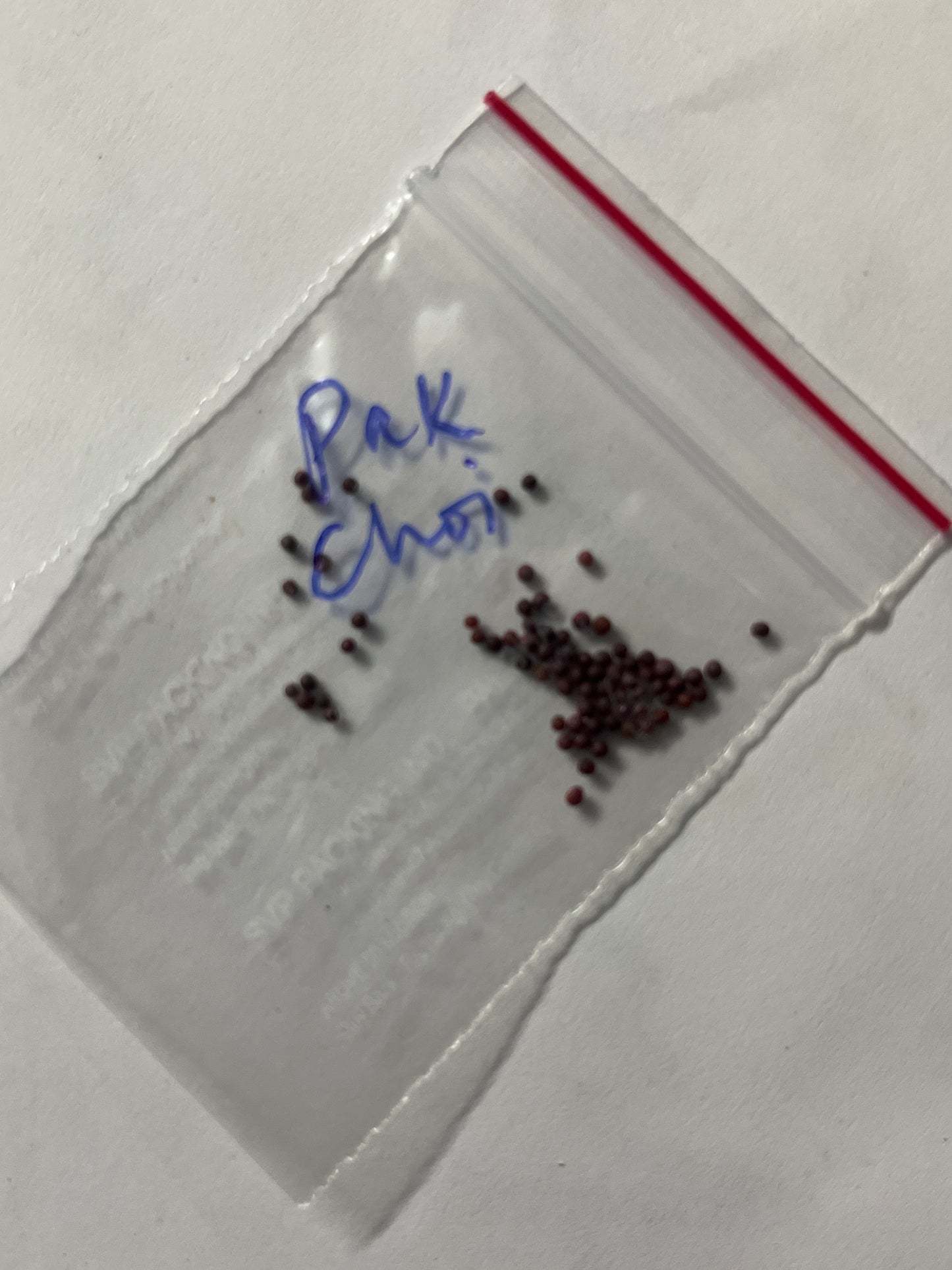Pak Choi Hybrid Green Seeds
Pak Choi Hybrid Green Seeds
Couldn't load pickup availability
Nutritious and Flavorful Pak Choi Seeds for Your Garden
Germination Time: 5-10 days
Hours of Sunlight: 6-8 hours per day, preferably in partial shade
Ideal Climate for Sowing: Cool weather crop, best grown in spring and fall
Plant Height: 12-18 inches
Organic Fertilizer Requirement: 1 cup of compost or well-rotted manure per plant every 3 weeks
Life Span: 2-3 months
Ideal Growing Temperature: 15-20°C (60-70°F)
Harvesting Time: 30-45 days after sowing
Maintenance Required: Low
Ideal Grow Bag Size: 12x12 inches, 12x24 inches, or larger for higher yields
Specifications of Pak Choi Seeds
Pak Choi, also known as Bok Choy, is a versatile leafy green that's not only easy to grow but also packed with essential nutrients. Particularly well-suited for Indian climates, Pak Choi thrives in various conditions, making it a fantastic choice for both novice and experienced gardeners.
Benefits / Uses of Pak Choi
Rich in vitamins A, C, and K, as well as calcium and iron, Pak Choi is a flavorful addition to salads, stir-fries, and soups. Growing your own Pak Choi ensures that you have a fresh and healthy supply of this delicious vegetable, perfect for enhancing your meals.
Planting and Care for Pak Choi
Each Pak Choi seed contains the potential for vibrant, crunchy leaves. With the right care, these seeds will germinate into robust plants, providing you with nutrient-rich greens.
Sowing Pak Choi Seeds
Sow seeds in moist, well-draining soil, approximately 1/4 inch deep. For optimal germination, keep the soil consistently moist but not waterlogged.
Growing Pak Choi
Pak Choi prefers cooler temperatures and should be kept in partially shaded areas during hot weather. Regular watering is essential to maintain even moisture in the soil. Use grow bags with drainage holes to prevent excess moisture. Mature plants typically reach heights of 12-18 inches.
Harvesting Pak Choi
Pak Choi can be harvested as soon as the leaves are large enough to eat, usually within 30-45 days after sowing. You can harvest the whole plant or pick outer leaves as needed, allowing the inner leaves to continue growing.
Precautions While Growing Pak Choi
Pak Choi thrives best in well-draining, fertile soil with a pH range of 6.0 to 7.0. Ensure proper spacing to improve airflow and reduce disease risk.
Common Problems Affecting Pak Choi Plants and Solutions
Pak Choi is generally resilient but can face pests like aphids, slugs, and caterpillars. Regular monitoring and using organic insecticides can help manage these pests effectively. Ensuring good airflow around plants helps prevent fungal diseases, while crop rotation and companion planting promote healthy soil.
Other Names for Pak Choi
- Botanical Name: Brassica rapa subsp. chinensis
- Tamil: பாக் சோய் (Pāk chōy)
- Malayalam: പാക് ചോയി (Pāk chōyi)
- Kannada: ಪಾಕ್ ಚಾಯ್ (Pāk chāyi)
- Telugu: పాక్ చాయ్ (Pāk chāyi)
- Marathi: बोक चॉय (Bok chōy)
- Hindi: पत्तागोभी (Pattāgobhi)
- Bengali: পাক চয় (Pāk chōy)
Pak Choi is a nutritious, flavorful leafy green that’s easy to grow in various conditions and makes a delightful addition to your home garden!
FAQ about Pak Choi Seeds
1. How long does it take for Pak Choi seeds to germinate?
Pak Choi seeds typically germinate within 5-10 days, depending on temperature and moisture levels.
2. When is the best time to plant Pak Choi?
Pak Choi is best planted in cooler months, making spring and fall the ideal times for planting in India.
3. How often should I water my Pak Choi plants?
Water regularly to keep the soil consistently moist, typically every few days, especially during dry spells, but avoid overwatering.
4. Can I grow Pak Choi in containers?
Yes! Pak Choi grows well in containers and grow bags, making it ideal for small gardens or patios.
5. What should I do if my Pak Choi leaves start to yellow?
Yellowing leaves can indicate nutrient deficiencies or overwatering. Check the soil and consider adding compost or fertilizer while adjusting your watering schedule.
Product features
Product features
Materials and care
Materials and care
Merchandising tips
Merchandising tips
Share




